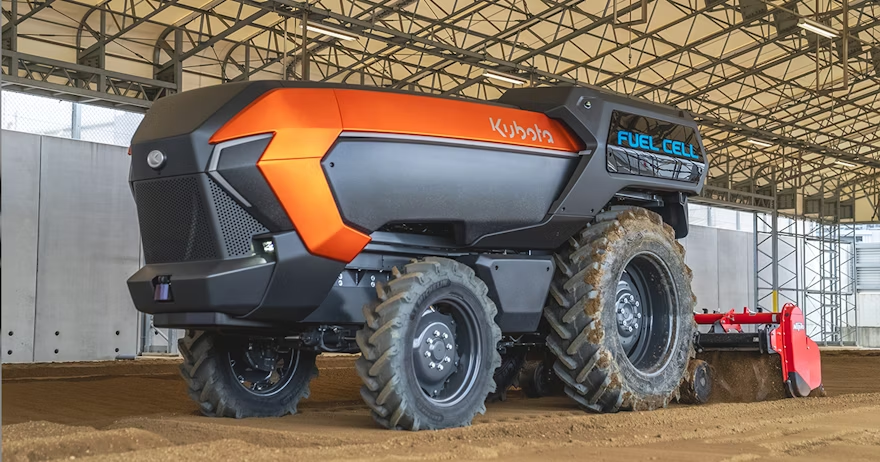The global demand for food continues to rise, and these technological innovations offer promising...
New DNA Test Can Track Meat, Poultry and Seafood

Once a carcass is processed into hamburger, for example, how do you track it? One company is pioneering the use of DNA to link the entire supply chain from farm to fork. Merck's IdentiGen TraceBack tool allows buyers to follow food from farm to fork.
Increasingly, the consumer wants to know where their food originates, often right back to the farm. But not every food item is so easily tracked, especially foods that might be aggregated from different meat sources before they go into the store refrigerator case. That's especially true for meat, poultry and seafood.
But a DNA-based solution could play a role in identification in the future that delivers fully traceable meat to consumers, thereby delivering trust and confidence in the meat supply chain.
"The core concept for any traceability or transparency initiative is that we need to know where our food comes from, and that's becoming increasingly important," says Ronan Loftus, Ph.D., commercial lead and co-founder of IdentiGen, part of Merck Animal Health. He points out that Merck Animal Health acquired a number of technology-based companies, including Allflex Livestock Intelligence — which is one of the largest animal identification, monitoring and traceability companies in the world using ear tags and other technology to track animals. "But once you move the animal into the meat processing plant, the ear tag is removed and is no longer a reliable identifier."
As the animal moves into more complex food processing keeping track is more complicated. "What IdentiGen uses through its DNA TraceBack platform is DNA, nature's barcode, and data analytics to accurately and precisely trace beef, pork, seafood and poultry that is verifiable from fork to farm," Loftus says. "We use that for identification of either livestock or the meat products derived from them."
Loftus explains that for this system to work, there's a need to capture the DNA of the animal, or its parents, at some point in the product life history. That would technically happen at the beef processor, which tends to be a choke point.
The DNA, once collected and linked to the source through that ear tag or back to the feedyard, becomes a long-term identifier for any products from the animal. "Once you break that carcass, it goes into multiple streams, but all of these pieces carry their DNA with them. We can capture the DNA at any point, whether it's in hamburger patties or a cooked product, and link it back to the source," Loftus explains.
He notes, however, that the processing plant — while a logical place to capture DNA information — is also a choke point in the system. Processors are too busy. In the longer term, he sees an opportunity to capture that information at the animal's birth, and then you would have the ability to link information to that animal’s whole life as part of the process.
For now, the processing plant is the most logical location. Customers of IdentiGen are often buyers on the back end — stores and restaurants. They want to track the product, and the processor is a logical source in the United States. Loftus adds that in Europe, there's increasing interest in linking animal information to DNA much earlier.
While beef is a logical use, Loftus notes that IdentiGen works with swine as well. "We would frequently capture the DNA from the sow, and we would do that clearly at the farm level," he says. "Then, all the products from her piglets can be traced right through the production system to the farm of origin." He notes the efficiency of the swine system is to effectively track more animals from a single DNA source. "It's a more effective way of achieving that objective," he says.
Telling the farm story
Right now, processed meat is matched to the processor, and the product can be traced to that point. But Loftus says there's a greater opportunity to link that information all the way back to the farm.
"I think the consumer wants to get to know those producers and understand their stories: the high animal welfare used in their production systems and how they're sustainably sourced," he says.
As retailers are working to commit to these sustainable stories, they need more accurate information. According to Loftus, it is those buyers who are footing the bill for IdentiGen. The company holds the information for the retailer or meat processor to provide details as needed.
EDITOR’S TAKE:
Transparency and traceability have been an issue for consumers and regulators for some time now. Anytime there is a human health issue related to food, having the capability to trace the origins of that product is invaluable. This new DNA technology is promising. Your AIR Editor has some personal experience with attempting to trace pathogens in food. Without a quick, reliable solution like the one proposed in this article, the only alternative was to trace the product back to the processor, or more than one in some instances, completely shut down the facility, conduct tests, have them analyzed in a reputable lab, do the clean up and hope for the best. A very slow and costly process. The new technology is very promising. The other advantage, increased consumer confidence and trust in their food supply!








